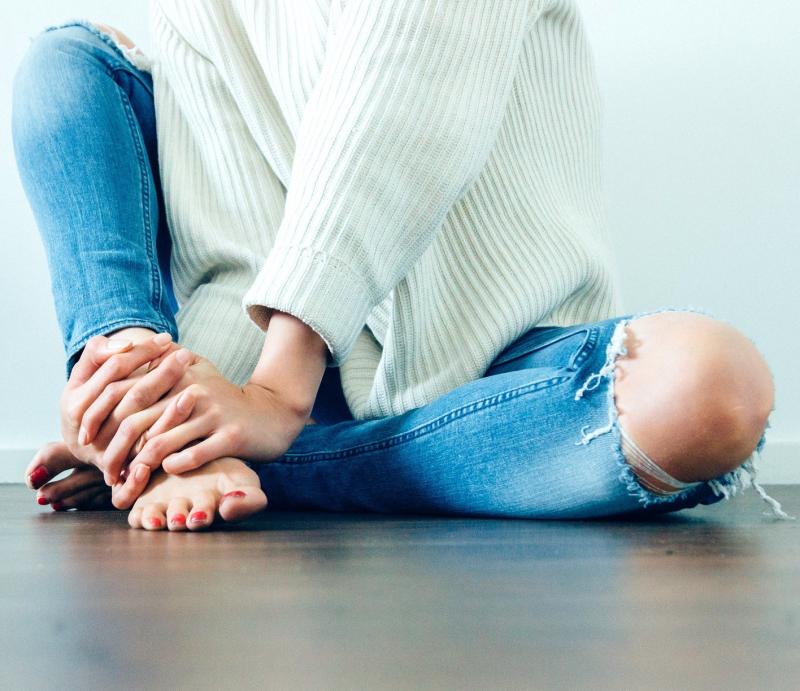
Patellofemoral Pain – Do you have persistent anterior Knee pain.
Patellofemoral pain is quite common and refers to pain behind or around the knee cap. While it typically occurs in physically active males and females aged <40 years, it also affects people of all activity levels and ages.
It is important to understand that it can generally be diagnosed in the clinic without the need for xrays. Evidence based Physiotherapy treatments can help reduce your pain and improve function, allowing patients to increase their physical activity.
Access our PHYSIO's GUIDE on dealing with 9 of the most common Sporting Injuries
How does it present
Patients commonly describe a gradual onset of anterior knee pain, usually unrelated to trauma, but associated with an increased frequency or duration of patellofemoral loaded activities (squatting, climbing stairs, hiking, running). Pain is rarely present when unloaded - such as sleeping, standing or resting. Patients often also describe patellofemoral crepitus, knee stiffness with prolonged sitting and restriction of physical activity. Pain can be chronic and long standing.
What causes patellofemoral pain
Patellofemoral pain may also present after patellar dislocation or subluxation. Less typically, patellofemoral pain follows acute trauma or other knee injuries but can develop post operatively or with altered gait patterns. With adolescents it maybe during periods of rapid growth while in older patients degenerative changes may be present.
Excessive loading or varied and rapid increases to physical activity which the knee cannot cope with, are thought to contribute to the development of pain. Poor biomechanics and movement patterns may also contribute, with the knee cap thought to move toward the outside of the knee stopping it from tracking normally in its groove.
A number of other factors can lead to this poor tracking –
- Poor function and weakness of hip muscles
- Poor function and weakness of thigh muscles
- Too much foot roll (pronation)
During the stance phases of gait the pelvis drops placing increased tension on the outside of the standing leg and pulling the knee cap outward. The hip collapses inward and rolls under the knee cap due to the poor function and weakness of the hip muscles. If the thigh muscles are weak or function poorly, then there is inadequate support for the knee and knee cap. If the foot also rolls in, this can cause the shin and knee to collapse inward under the knee cap. Continued repetition then leads to the onset of anterior knee pain.
download our exclusive FREE E- Book guide on managing Knee pain
What can you do
Most importantly is strengthening and improving the movement patterns. Physiotherapy targeted exercises based on your clinical findings can address some of these factors (altered hip, knee, or foot movements, kneecap alignment, muscle strength) and have been shown to reduce pain and improve physical function. Often a period of rest first is beneficial and then exercises can start in lying or sitting progressing to standing and functional positions as the pain settles.
These exercises for weakness and poor function of the hip and thigh are common and sometimes exercises for the foot or back are also required. You may also need to stretch your calf, hamstring or thighs. Importantly exercises will not help sufficiently unless performed with the correct technique and on a regular basis.
Manual therapy and taping or strapping can also help to relieve pain in the short term – your therapist can apply this or teach you how to do this. Specific braces can also help relieve pain as may the addition of foot orthotics - your physiotherapist will help you decide if any of these are appropriate.
Your Physiotherapist will help you understand why you have knee pain, what factors have most likely contributed and how to modify your activity to improve your pain and recovery. They will guide you on the exercises most suitable to you and other helpful treatments.
Our Physios have advanced knowledge, experience and skills in the treatment of knee pain. They will develop a program suited to the equipment you have available in conjunction with hands on manual therapy and pain relieving techniques. Call us on 8346 2000 or 8342 2233 or please contact us at hindmarshphysio.com.au/contact for an appointment soon.
Additionally if you would like some extensive information on managing Knee pain, just visit the link below to download our exclusive FREE E- Book guide on managing Knee pain.
References Dr Christian Barton and Michael Rathleff and Prof Kay M Crossley BMJ 2015;351:h3939
Free Knee GuideBlog Archive
Contact Us
Hindmarsh Physiotherapy & Sports Injury Clinic
281 Port Road
HINDMARSH SA 5007
Appointments
